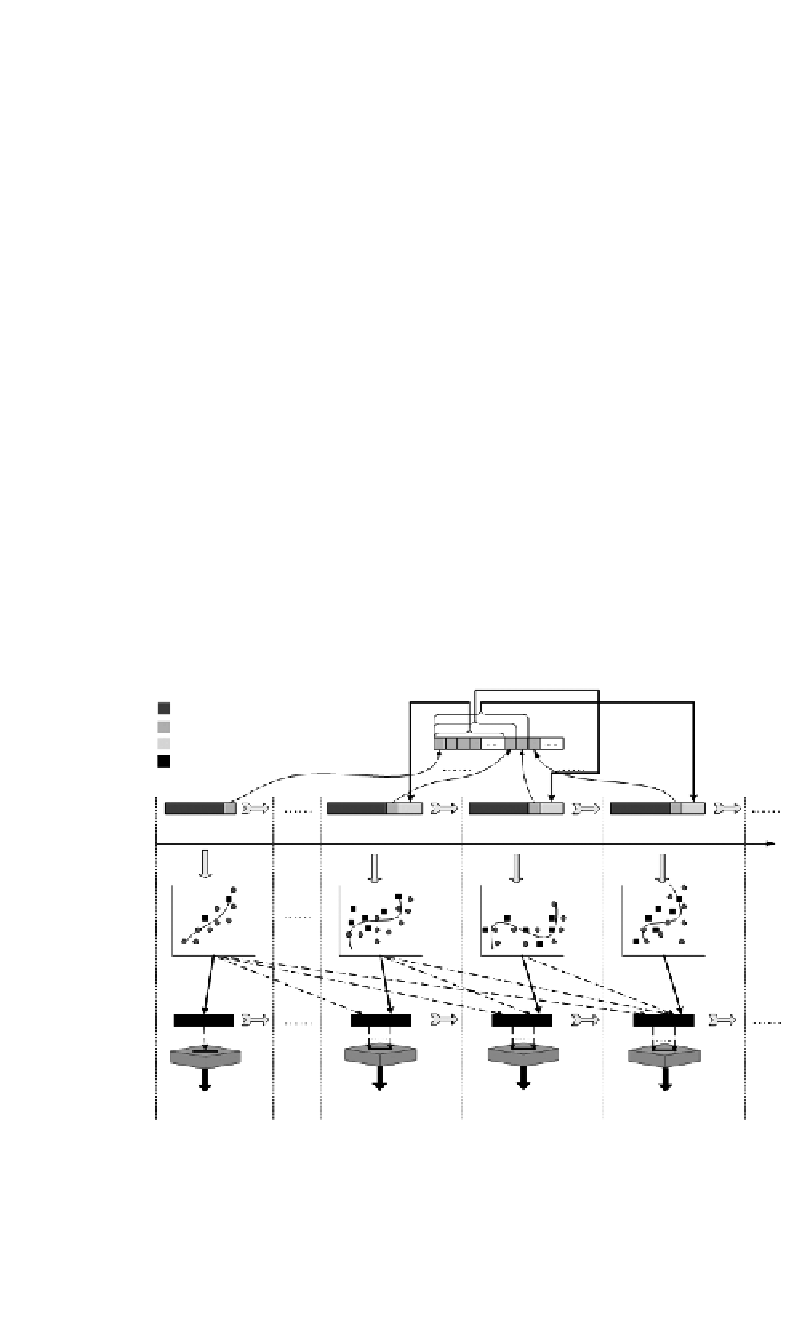Information Technology Reference
In-Depth Information
7.3.3 Selective Accommodation Algorithm
In lieu of pushing all minority class examples into the data chunk under
consideration, this type of method evaluates the similarity between each
minority class example and the current minority class set first. Only parts of
the previous minority class examples that are most similar to the target concept
of the current minority class are chosen to compensate the imbalanced class
ratio of the data chunk under consideration. As discussed in Section 7.2.1, the
similarity can be calculated by measuring the Mahalanobis distance between the
previous minority class example and the current minority class set or counting
the number of minority class cases within the
k
-nearest neighbors of each
previous minority class example inside the data chunk under consideration. The
Mahalanobis distance approach is adopted by SERA and MuSeRA, while the
k
-nearest neighbor approach is applied in REA. The pseudo-codes of these three
algorithms are described in Algorithm 7.4.
The system-level framework of SERA, MuSeRA, and REA is illustrated in
Figure 7.3. All previous minority class examples are stored in
Q
. At time
t
=
n
,
a certain number of minority class examples in
Q
are chosen on the basis of
alternative similarity measurement, that is, the Mahalanobis distance or the
k
-
nearest neighbors. These examples are then appended to
S
(n)
such that the ratio of
minority class examples in the “post-balanced” training data chunk
{
S
(n)
,
Q
(I )
}
is equal to
f
. Base hypothesis
h
n
is created on
{
S
(n)
,
Q
(I )
}
. SERA stops at this
point to return
h
n
as the final hypothesis
h
(n)
final
. MuSeRA and REA continue by
inserting
h
n
into the hypothesis queue
H
, each base hypothesis
h
i
within which
The majority training data
The minority training data
The selectively absorbed data
The testing data
t
=
1
t
=
k
t
=
k
+
1
t
=
k
+
2
Time
h
1
h
k
h
k
+
1
h
k
+
2
VOTE
VOTE
VOTE
VOTE
h
(
k
+
1)
final
h
(1)
final
h
(
k
)
final
h
(
k
+
2)
final
Figure 7.3
The system-level framework of SERA, MuSeRA, and REA.









Search WWH ::

Custom Search